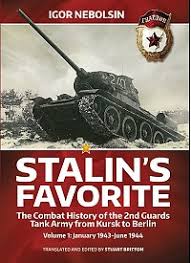I recently purchased Robert Forczyk’s work Tank Warfare on the Eastern Front 1941-1942. Having quickly read this work I was eager to order the follow on volume that focuses on the period from 1943 through 1945. The reason I was eager to purchase the second volume was that these books approached tank warfare from a view point other then the hard penetration tables and values by which most discussion of armoured warfare is considered. Rather, these books provided greater attention to the the training, organization, and tactics that while not as commonly studied had a decisive impact on the innumerable battles throughout the conflict. Robert Forczyk’s experience as an armoured officer enable him to keenly identify the differences and highlight how these differences manifested themselves on the battlefield and as an explanation for the performance of the German and Soviet Forces.
The first book largely covers the period of German supremacy as they had superior training, organization, and experience. The first part of the book focuses on the forces and organizations of the Soviet and Germans. However rather then limiting himself to the military forces involved he includes the economic forces such as their respective manufacturing capabilities and philosophies. This is followed by an overview of the battles fought in 1941 and 1942 diving into particular moments and vignettes to highlight organizational differences. While this period is largely comprised of German victories and advances, interesting examples of German setbacks are included. I found that the strength of this work was in his assessment of tactical actions while weakest when discussing operational and strategic decision making.
The second book, Tank Warfare on the Eastern Front 1943-1945, predominately covers 1943 with scant attention to 1944/1945 (40 pages out of 240). While the battles of 1943 are discussed in some detail I believe that a critical analysis as to why the German formations and tactics that were so successful in penetrating Soviet lines in 1941 and 1942 were incapable from 1943 onwards is lacking. Likewise not enough attention is focused on the development of Soviet doctrine to enable their tank corps and tank armies the opportunities to pierce and conduct deep battle operations. The Soviet Union won the war, and the action of their tank armies were the champions of armoured combat and it is important to understand the evolution and evaluation of this product.
While I may disagree with the conclusions reached in both books, I do appreciate the perspective that Robert Forczyk has provided. I would recommend his first work “Tank Warfare on the Eastern Front 1941-1942” as in interesting introduction to armoured warfare on the Eastern Front. However, I am less inclined to recommend the second work which I feel doesn’t fully account for the evolution of combat forces. In both instances I appreciated the perspective he approached these works from and the insights his background was able to provide.
-A.R.-
